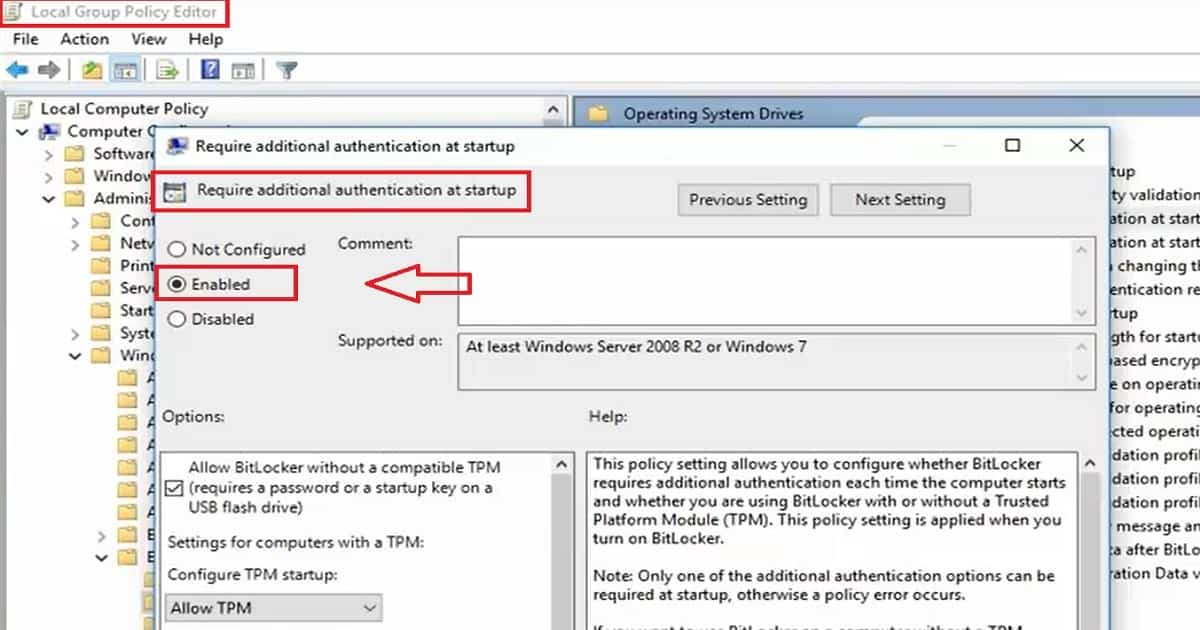

- #Trusted platform module windows 10 enable upgrade#
- #Trusted platform module windows 10 enable software#
- #Trusted platform module windows 10 enable Pc#
Thanks to Windows 11, people are scalping TPM2.0 modules as well now. Some are even scalping TPM 2.0 modules on eBay! That’s left many trying to figure out if their device supports TPM or not, confusion with BIOS settings, and even people rushing to buy separate TPM modules they don’t need.
#Trusted platform module windows 10 enable Pc#
The PC Health Check app that Microsoft asks people to download and check to see if Windows 11 runs will flag systems that do not have Secure Boot or TPM support enabled or devices that have CPUs that aren’t officially supported (anything older than 8th Gen Intel chips). Microsoft’s Windows 11 website lists the minimum system requirements, with a link to compatible CPUs and a clear mention that a TPM 2.0 is required at a minimum.
#Trusted platform module windows 10 enable upgrade#
That’s what’s really changing with Windows 11, and combined with Microsoft’s Windows 11 upgrade checker, it has resulted in a lot of understandable confusion. While Microsoft has required OEMs to ship devices with support for TPM chips since Windows 10, the company hasn’t forced users or its many device partners to turn these on for Windows to work. Microsoft has a habit of struggling to move Windows into the future in both hardware and software, and this particular change hasn’t been explained well. Microsoft is pushing modern Windows 11 PCs.
#Trusted platform module windows 10 enable software#
And while the company isn’t responsible for forcing its clients to keep its software patched, it’s trying to be more proactive about protection. Microsoft software has been at the core of devastating attacks that made global headlines, like the Russia-linked SolarWinds hack and the Hafnium hacks on Microsoft Exchange Server. It’s widely used by businesses worldwide, and there are more than 1.3 billion Windows 10 machines in use today. Microsoft is trying to play its part, particularly as Windows is the platform that’s often most affected by these attacks. TPMs will certainly help with certain attacks, but Microsoft is banking on a combination of modern CPUs, Secure Boot, and its set of virtualization protections to really make a dent in ransomware. Ransomware attacks hit the headlines weekly, and ransomware funds more ransomware so it’s a difficult problem to solve. That 83 percent figure seems huge, but when you consider the various phishing, ransomware, supply chain, and IoT vulnerabilities that exist, the broad range of attacks becomes a lot clearer.

“Our own Security Signals report found that 83 percent of businesses experienced a firmware attack, and only 29 percent are allocating resources to protect this critical layer,” says Weston. Microsoft has been warning for months that firmware attacks are on the rise.

A dedicated TPM chip you probably don’t actually need for Windows 11. Microsoft wants to bring that same level of protection to everyone using Windows, even if it’s not always perfect. TPM 1.2 chips have existed since 2011, but they’ve typically only been used widely in IT-managed business laptops and desktops. It can be used to encrypt disks using Windows features like BitLocker, or to prevent dictionary attacks against passwords. TPMs work by offering hardware-level protection instead of software only. Windows 11 is free, but your CPU might not be officially supported


 0 kommentar(er)
0 kommentar(er)
